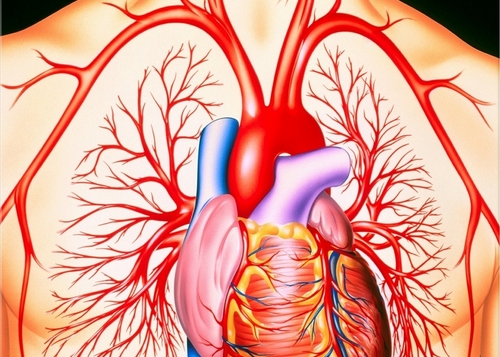The writer of twice-monthly health columns is a practicing cardiologist, clinical professor at Wayne State University School of Medicine and founder of the Kahn Center for Cardiac Longevity in Bingham Farms. He is an author who has appeared on national TV, including "Dr. Oz" and "The Doctors Show."
Good news: Simple and consistent lifestyle decisions such as not smoking, daily exercise, a diet of whole and unprocessed foods, maintaining optimal weight and moderate alcohol use can add over 10 years of lifespan.
Despite that guidance from by the Harvard School of Public Health, heart disease can strike even the most buff among us. There's nothing pretty about lying in a cardiac care unit bed on a ventilator after a major heart attack, so here's straight talk about a plan to know you are young inside and out.

Dr. Joel Kahn: "Measure heart age with precision."
The concept that heart aging is preventable, including living a heart attack-proof life, is not new. Over 60 years ago, Dr. Pasul Dudley White of Harvard Medical School announced that “a heart attack after age 80 is an act of God but a heart attack before age 80 is a preventable event.” Yet, how do you measure heart age with precision?
► Step 1: Get a coronary artery calcium scan (CACS) after 40
At age 50, a health care provider says, “we need to schedule your colonoscopy and a mammogram (if female)”. Why did your health care provider not also say to you that “we need to schedule a CACS so we know if your heart is aging”?
A CACS is a CT scan of the heart that takes only a few seconds, is painless, uses no dye or needles, has a very low radiation exposure (like a mammogram), and costs about $75-$100 at Detroit-area hospitals. The ideal result in about 50% of those tested is a CACS score of zero. Anything higher raises the risk for heart attack and proves aging of the heart and entire body.
Recently the American Heart Association and other organizations have included the option of getting a CACS for most people before starting prescription cholesterol medications. Ask your health care provider for a CACS prescripotion if you have no known heart disease and are over 40. If you have had a heart attack, stent or bypass surgery, you do not need this screening.
► Step 2: Find a carotid intimal-medial thickness (CIMT) scan
A CACS identifies calcification of arteries, something called hard plaque. There is also a pathology called soft plaque that may threaten health. A CIMT is a 20-minute ultrasound of the neck that uses advanced software measurements to examine carotid arteries for both soft and hard plaque. The CIMT also measures the thickness of arteries, another sign of aging.
The biggest drawback is finding a quality center that offers it. Most of my patients have had both of these exams and they know with precision their true “arterial age” and work hard at a lifestyle program to stay “young at heart.”
► Step 3: Arrange advanced labs
It is unacceptable to have the same lab studies you had for the last 30 years, as there have been major advances in laboratory testing. I suggest asking your health care provider for a few advanced blood tests or arrange your own testing online.
-
Advanced cholesterol profile: A standard cholesterol panel provides calculated LDL cholesterol level, but the top of the line NMR lipoprofile measures LDL-cholesterol particle number and size. These measures are more predictive of future heart and stroke events. All cholesterol particles raise the risk of an aging heart but the small, dense particles are the riskiest and worth measuring.
-
hs-CRP: The high-sensitivity C-reactive protein is a blood test patented by Harvard Medical School to measure inflammation or the “fire” that results from an irritated immune system. The higher the hs-CRP, the greater the risk fo atherosclerosis, heart attack, stroke and even other conditions like cancer and dementia. The challenge is finding why the hs-CRP is elevated and can may be due to processed diets heavy in meat. Other causes can be dental or gastro-intestinal infections, nutritional deficiencies, food allergies, skin diseases like psoriasis and too much fat around the waist.
-
Lipoprotein (a): This is a genetic form of cholesterol that's elevated in about 25% of those tested (90 million Americans). It's rarely checked even though hundreds of research studies indicate that if it's high, the risk of heart attack and stroke skyrocket. It runs high in many families that have been decimated by heart disease. It is a simple and inexpensive lab test.
-
Homocysteine: This amino acid is produced by a process called methylation. It can injure arteries when elevated. It may be due to a defect in the MTHFR gene, a meat-heavy diet or B vitamin deficiencies. It's a simple, inexpensive lab test.

► Step 4: Calculate your Astro-CHARM Score
A major advance in 2018 was the publication of the “Astro-CHARM score” as an online risk calculator. It permits entering your CACS and hs-CRP along with more traditional measures (age, smoking status, total cholesterol, HDL-cholesterol, and blood pressure) to predict the 10-year risk of heart attack and stroke.
The current focus on learning CPR or having defibrillators in gym classes misses the mark. Heart disease is measurable, preventable, and reversible long before tragedy strikes.
Take the steps to guarantee that you are young on the inside. As I say: test, not guess.










